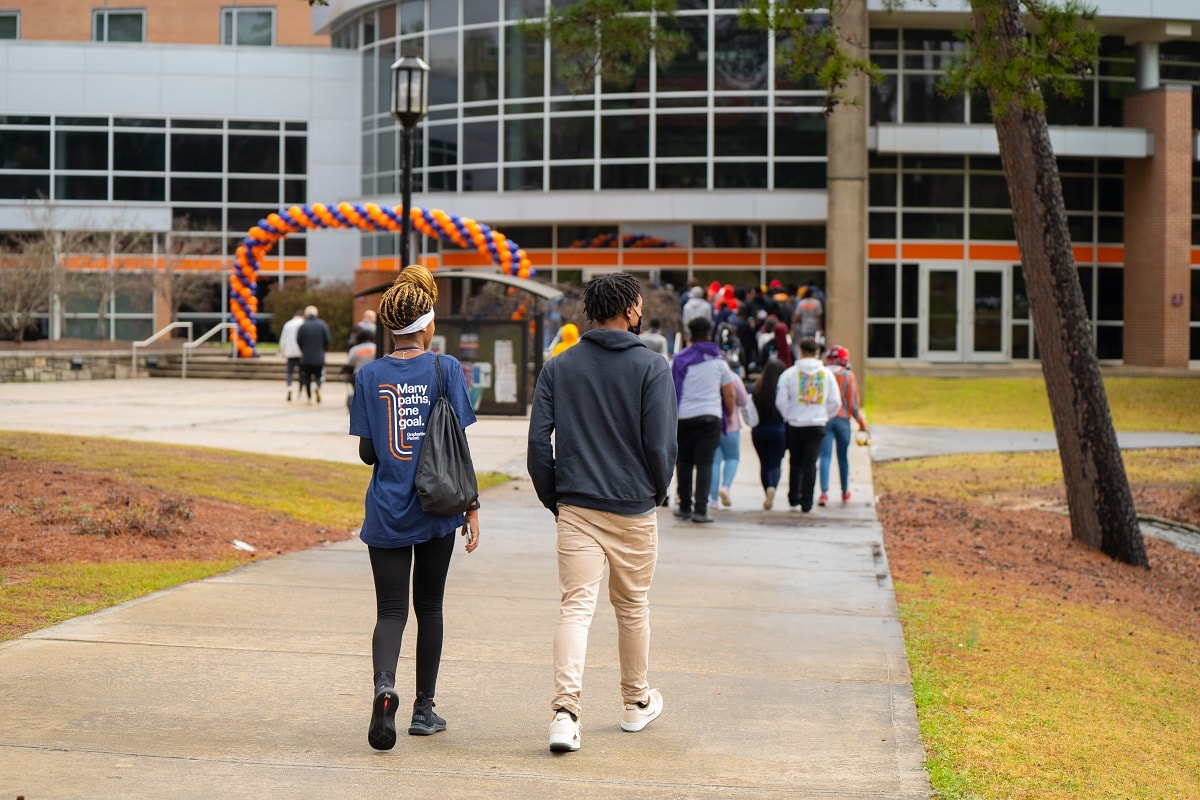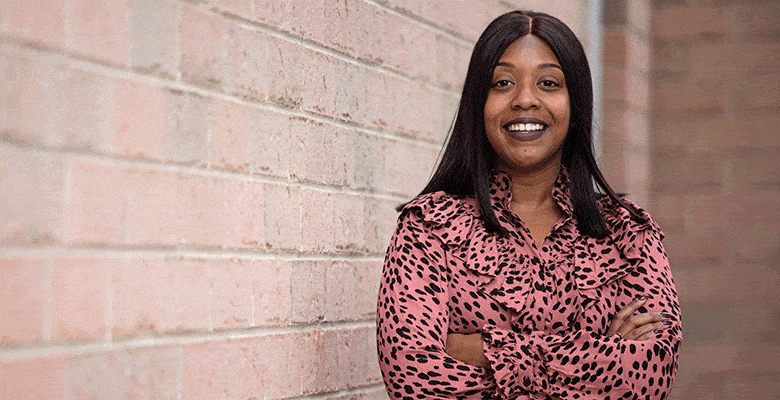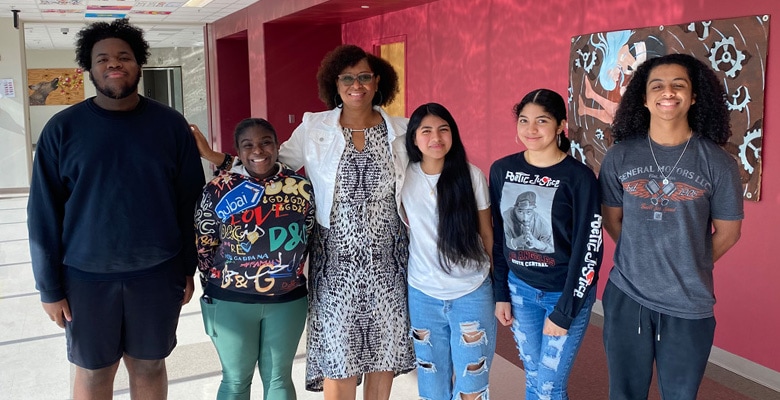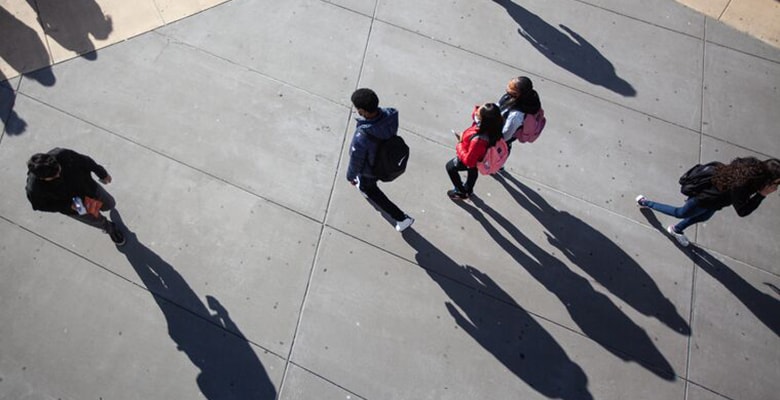Career academies engage students in postsecondary planning early in high school by curating classes through the lens of potential careers.
College and Career Readiness: What does it mean?
By Shelby Ward
July 27, 2022
College and career readiness is a frequently used metric in schools and in the postsecondary access field. Preparing students for what comes after high school sounds like a desirable goal. But how is readiness defined? And what steps can schools take to help pave the way?
The Degree Divide is one of the most entrenched, systemic social problems we face in the US. At OneGoal, we believe that while talent and ambition are equally distributed among all students, opportunity is not. System-level barriers pose significant challenges for first-generation students of color and students from low-income communities. But there are tools schools can provide individual students and characteristics teachers can instill to improve outcomes for young people to ensure their readiness for college and careers.
Encouraging personal responsibility

OneGoal Fellows in Atlanta planning out their futures at the region's Youth Summit last spring.
Following through on goals and tasks doesn’t always come naturally for young people. Teaching and demonstrating responsibility enables students to define their personal goals and understand pathways for how to achieve them.
Personal responsibility can look like a student making a goal to keep their room clean, completing assignments on time for class and work, or remembering to water a neighbor’s plants when asked.
Students must develop a high degree of personal responsibility before they graduate to succeed in college and beyond. As personal responsibility is nurtured, displayed, and celebrated, young people may be open to taking on more responsibilities to seek higher rewards. A student who turns in their assignments on time and with precision will receive better grades which can lead to scholarship or work opportunities. Dependably completing tasks in the workplace can lead to promotions, better pay, more benefits, and more options.
Personal responsibility can also be nurtured at home by giving children tasks they are responsible for completing. By consistently celebrating when tasks are completed correctly and taking time to redirect and reinforce expectations when tasks are not completed, parents and caregivers can develop a strong sense of personal responsibility in their children.
Holding students to age-appropriate standards when grading work and enforcing deadlines can go a long way in the classroom. Beyond school work, students can also be given classroom jobs. When they complete their jobs to satisfaction, there can be rewards such as stickers, classroom currency, or homework passes. But, while classroom jobs are a great way to improve personal responsibility, it’s necessary to respect the boundary between enhancing personal responsibility and assigning unpaid labor.
Teaching financial literacy and planning
Ask any adult, and they will tell you they wish they understood how to manage their money sooner. The importance of money management cannot be understated. Without a basic understanding of managing personal finances before graduating from high school, students may have difficulty thriving in college and their future careers.
According to youth.gov, “A report on the results of a financial literacy exam found that high school seniors scored on average 48 percent correct.”
Budgeting, long-term planning, and keeping track of spending will ensure that students can pay for housing, food, tuition, and books.
To help students succeed, schools can prioritize personal finance lessons and courses for students. Personal finance lessons can be integrated into the existing curriculum by using personal finance as examples for various concepts. Teachers can also use class money to help students develop habits such as saving for more significant rewards. Students can earn “money” and redeem it for things such as homework passes or extra free time.
Integrating personal finance into existing classes can be highly beneficial to students. However, states and schools can go further by creating a personal finance class as part of the high school graduation requirements. Recently, the state of Texas passed SB 1063. This bill allows high school students to take a personal finance class instead of the currently required economics class. By making this change, Texas is making it easier for schools to expose students to more lessons in personal finance while they are still in high school.
Communication is key!
Effective communication is vital to both personal and professional relationships. Good communication can help solve disagreements or misunderstandings between people before they become significant problems. In college, students must communicate with each other during group projects, in study groups, and with their professors. Expressing your feelings, expectations, and uncertainties with others during college can help pave the road to graduation.
Entering the workforce requires effective communication in applying, interviewing, and negotiating pay and benefits. Strong communication skills can lead to better work performance and allow you to advocate for better working conditions and higher pay.
To help students improve their communication skills, teachers can plan activities encouraging them to communicate. Such activities include group projects, class discussions, and debates. While group work can be frustrating for students and the teachers, they are worth the effort as students practice their communication skills.
Examples in leadership
Not every leader is a boss, and not every boss is a leader. Being a leader can mean setting an example for coworkers, younger siblings, and friends. Opting out of office gossip, offering support when a coworker is overcommitted, and showing kindness when your peers are struggling, are all examples of excellent leadership skills.
Helping a sibling with homework or showing interest in their hobbies, keeping a tidy bedroom, and volunteering in the community are signs of a strong leader and should be celebrated. Being a leader among friends looks much like being a good friend. Demonstrating loyalty, compassion, honesty, and reliability can cultivate long-lasting friendships.
In school, students can be chosen to be leaders in their groups, their classrooms, and within their grade levels. Leadership opportunities should be rotated around the students so that many students can have the chance to experience leadership. Teachers can assign the leader for a group project and ensure that students get the opportunity throughout the year.
R-E-S-P-E-C-T!
The golden rule, ‘treat others how you want to be treated,’ is still our best definition of respect. Respecting others means being mindful of how you use other people’s time, showing thoughtfulness about different cultures and beliefs by not belittling or mocking them, and remaining civil when the opinions of others do not align with your own.
The other half of the golden rule is treating yourself with respect. We care for ourselves by prioritizing sleep, nutrition, and regular exercise. Understanding your strengths, weaknesses, identity, and values is also essential. What are you good at? What aren’t you good at, and is it something worth improving, or are you better off accepting your limitations and leaning into your strengths? Where do you come from, and how does this inform what you care most about in the world? These essential questions can lead to self-discovery and a sense of pride and respect for yourself when included in existing lesson plans.
Goal setting
Young people can set goals for every aspect of life. Whether trying to beat a personal record as an athlete, enrolling in a high-quality match school after high school graduation, or working toward a promotion, goals are what keep us moving and motivated in life.
Learning to set goals is an integral part of college and career readiness. A great way to practice goal setting in the classroom is to direct students to make goals at the beginning of the school year. Teachers should demonstrate how to set goals following the SMART model (Specific, Measurable, Attainable, Relevant, and Timely). By following this model, students will be able to set practical goals.

Campus tour - OneGoal Atlanta student summit included workshops and campus tours to prepare students for their postsecondary journey.
Bringing it all together
Teachers, parents, and caregivers can help their students succeed in college and their careers by ensuring that they learn these skills in school and at home. Personal responsibility, financial literacy, strong communication, leadership skills, respect for yourself and others, and the ability to set goals are all the main ingredients for college and career readiness. Mastering these skills will prepare young people for postsecondary success and family-sustaining wages in the profession of their choice.
College and Career Readiness Lesson Ideas
- Give students jobs to complete in the classroom. They can be rotated weekly, monthly, or quarterly. Not only will students feel valued in the classroom, but they will also learn responsibility.
- Reward students for classroom jobs or other achievements with classroom money. They can redeem this money for rewards such as cool pencils or homework passes. You can even ask community members for better prizes. (You should not go broke buying things!) Students will be more likely to complete tasks in the classroom and learn financial responsibility.
- When assigning group work, assign students specific roles within the group. Make sure the positions rotate with different activities so all students can experience each function. This will help them learn how to work on a team.
- Hold a classroom debate about subject-relevant current events and model how to appropriately disagree with others.
- On the first day of school, have students create a list of 3 strengths and 3 weaknesses. Have them share their strengths with classmates by creating a poster about themselves. Students should look at their weaknesses and make a SMART goal for each one. Reexamine the goals throughout the school year.
Related Stories
Metro Atlanta caring teacher Melissa Edwards leads the OneGoal Fellow cohort at North Atlanta High School as their Program Director sharing her advice.
What root causes prevent students from completing their degrees? Read how the research process and subsequent findings are informing program innovations.





